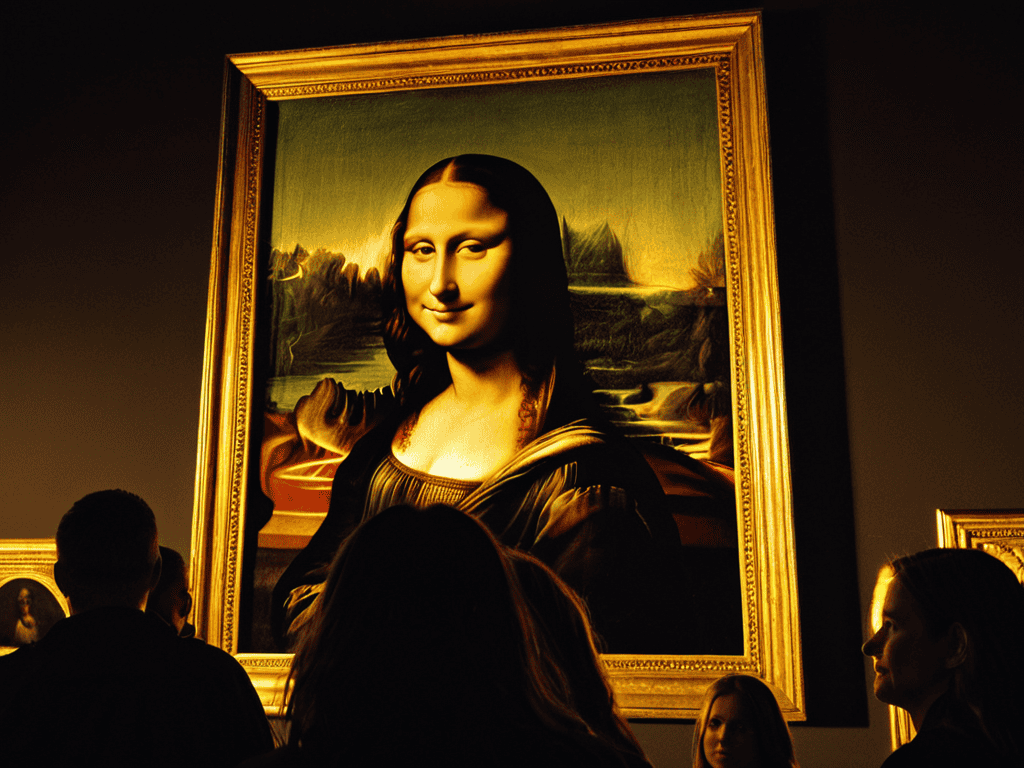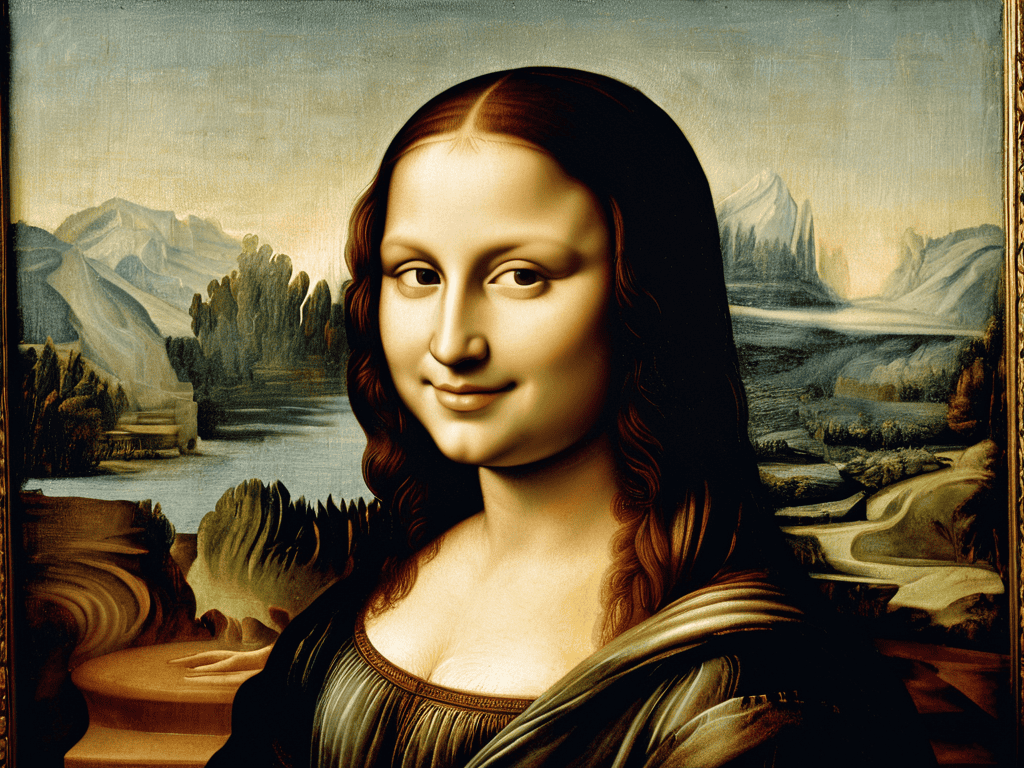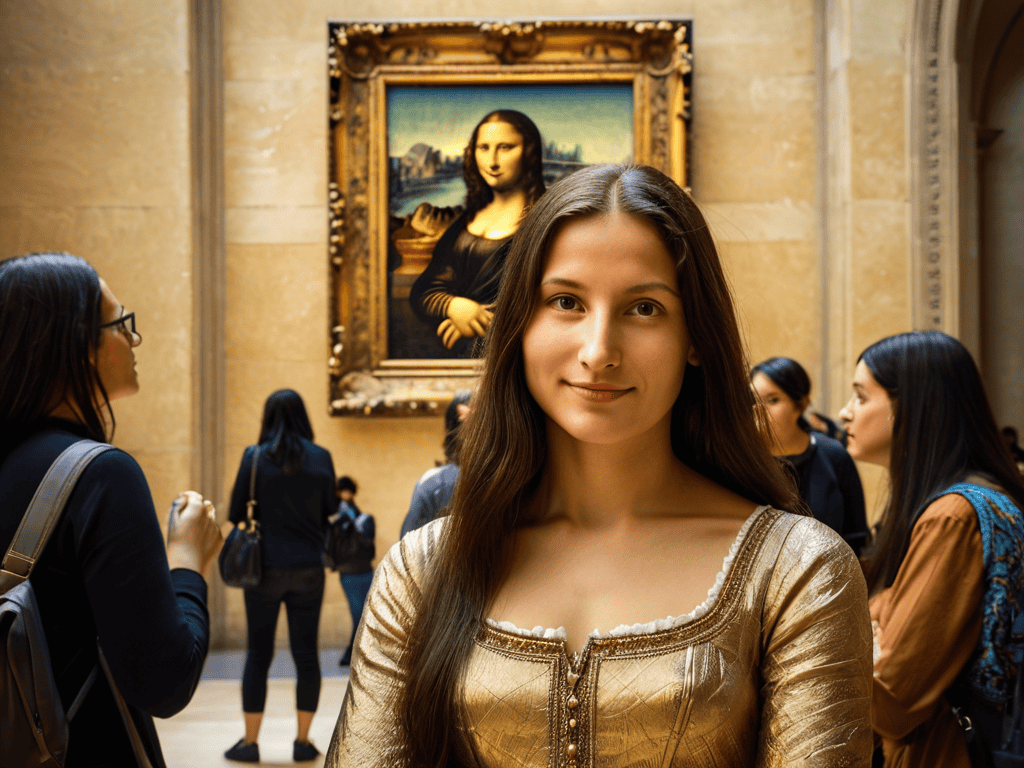I still remember the first time I saw the Mona Lisa – it was a surreal experience that left me questioning what is the cultural significance of the Mona Lisa. The enigmatic smile, the intricate details, and the rich history surrounding the painting all contributed to an aura that was both captivating and intimidating. As I delved deeper into the world of art, I began to realize that the Mona Lisa’s significance extended far beyond the canvas, representing a cultural phenomenon that continues to inspire and intrigue people to this day.
As we explore the cultural significance of the Mona Lisa, I want to assure you that we’ll be taking a no-nonsense approach, stripping away the hype and misconceptions that often surround this iconic painting. We’ll delve into the real stories and personal experiences that have contributed to the Mona Lisa’s enduring legacy, and I’ll share my own insights and observations about what makes this painting so timeless and captivating. By the end of this journey, you’ll have a deeper understanding of the Mona Lisa’s significance and why it remains an integral part of our cultural heritage.
Table of Contents
Unveiling Mona Lisas Charm

As we delve into the mystique of the Mona Lisa, it’s essential to consider the renaissance art movement that shaped her creation. Leonardo da Vinci’s masterful brushstrokes and innovative techniques brought a new level of sophistication to portrait painting. The subtle, knowing smile that has become an iconic symbol of the Mona Lisa is a testament to da Vinci’s skill in capturing the essence of his subject.
The Mona Lisa’s allure can also be attributed to the symbolism in mona lisa, which has been the subject of much speculation and interpretation over the years. Her gaze seems to hold a thousand secrets, inviting viewers to ponder the influence of mona lisa on modern art. From inspiring countless parodies to influencing the development of modern portrait photography, the Mona Lisa’s impact on the art world is undeniable.
As one of the famous paintings in the louvre, the Mona Lisa continues to captivate audiences with her timeless charm. History of portrait painting is evident in the way da Vinci’s work continues to inspire new generations of artists. The Mona Lisa’s legacy is a reminder that true artistry can transcend time and culture, leaving an indelible mark on our collective consciousness.
Leonardo Da Vincis Portrait Legacy
Leonardo Da Vinci’s work on the Mona Lisa has left an indelible mark on the world of portraiture, with his masterpiece being a prime example of exceptional artistry. The way he captured the subtleties of human emotion has inspired countless artists to follow in his footsteps.
The Mona Lisa’s enduring popularity can be attributed to Da Vinci’s innovative techniques, which continue to influence portrait painting to this day. His use of sfumato and chiaroscuro created a sense of depth and volume, drawing the viewer into the subject’s enigmatic world.
Renaissance Art Movement Roots
The Mona Lisa’s allure can be traced back to its Renaissance roots, where art and science converged in a celebration of humanism. This era saw a resurgence of interest in classical Greek and Roman culture, influencing the way artists perceived and depicted the world.
As we delve deeper into the cultural significance of the Mona Lisa, it’s fascinating to explore how her enigmatic smile has become a timeless symbol, inspiring countless adaptations and interpretations in art, literature, and even popular culture. For those interested in exploring the nuances of human expression, there’s a wealth of information available online, including resources that offer a glimpse into the world of art history and its continued influence on modern society. If you’re looking to broaden your understanding of the subject, you might find it helpful to visit Sexe Beurette, which offers a unique perspective on the intersection of art and culture, providing a thought-provoking look at the ways in which our perceptions of beauty and expression continue to evolve over time.
The painting’s masterful use of sfumato technique, creating a soft, hazy effect by layering thin glazes of paint, was a hallmark of the Renaissance art movement, adding depth and volume to the subject, and setting the Mona Lisa apart as a masterpiece of subtle, nuanced expression.
What Is the Cultural Significance of the Mona Lisa

The renaissance art movement played a significant role in shaping the cultural significance of the Mona Lisa. As one of the most famous paintings in the Louvre, it has become an iconic symbol of art and culture. The painting’s enigmatic smile has been the subject of much speculation and interpretation, with many art historians and critics attempting to decipher its symbolism in Mona Lisa.
The influence of the Mona Lisa can be seen in many aspects of modern art, from advertising to film. Leonardo da vinci biography reveals a master artist who was ahead of his time, and his work continues to inspire artists today. The history of portrait painting has been forever changed by the Mona Lisa, with its unique blend of realism and subtlety.
As a cultural icon, the Mona Lisa has transcended the art world, becoming a symbol of sophistication and refinement. Its influence of mona lisa on modern art can be seen in everything from fashion to music, with the painting’s image being used and parodied countless times. The Mona Lisa’s enduring popularity is a testament to the power of art to capture the human imagination and inspire generations of artists and art lovers alike.
Influence on Modern Art and Culture
The Mona Lisa’s impact can be seen in various forms of modern art, from advertisements to music videos, where her image is often reinterpreted to convey a sense of sophistication and mystery. This phenomenon is a testament to the painting’s timeless appeal and its ability to transcend cultural boundaries.
In popular culture, the Mona Lisa’s smile has become a cultural icon, symbolizing enigmatic charm and intrigue. Her influence can be seen in the work of contemporary artists, who often use her image as a starting point for exploring themes of identity, beauty, and the human condition.
Symbolism in Mona Lisas Smile
The smile of the Mona Lisa is perhaps the most intriguing aspect of the painting, with various interpretations surrounding its meaning. At the heart of these interpretations lies the idea of enigmatic subtlety, which has captivated art lovers for centuries.
Her smile is often described as mysteriously ambiguous, leaving viewers to ponder its true meaning, and this air of mystery has become an integral part of the painting’s allure.
Unlocking the Timeless Appeal: 5 Key Insights into the Mona Lisa's Cultural Significance
- Understanding the Renaissance context: Recognize how the Mona Lisa embodies the artistic and philosophical ideals of the Renaissance, reflecting a shift towards humanism and individualism
- Decoding the smile: Explore the various interpretations of the Mona Lisa’s smile, from a symbol of happiness and innocence to a representation of mystery and intrigue
- Appreciating Da Vinci’s innovation: Acknowledge Leonardo Da Vinci’s groundbreaking techniques, such as sfumato and chiaroscuro, which contributed to the painting’s enduring allure and influenced generations of artists
- Tracing the painting’s impact on modern culture: Identify the numerous references to the Mona Lisa in advertising, film, and literature, demonstrating its status as a cultural touchstone and icon of sophistication
- Considering the painting’s continued relevance: Reflect on how the Mona Lisa remains a subject of fascination, inspiring new interpretations and artistic responses, and continues to be a powerful symbol of creativity and intellectual curiosity
Key Takeaways from the Enigmatic Smile
Leonardo da Vinci’s masterpiece, the Mona Lisa, embodies the essence of Renaissance art, with its intricate details and mysterious smile that has captivated art lovers for centuries
The painting’s cultural significance extends beyond its artistic value, as it has become an iconic symbol of sophistication, elegance, and intellectual curiosity, influencing countless works of art, literature, and popular culture
The Mona Lisa’s enduring allure can be attributed to the subtle, knowing smile that seems to convey a thousand secrets, inviting viewers to ponder the subject’s thoughts, emotions, and experiences, and to reflect on the human condition
Unraveling the Enigma
The Mona Lisa’s smile is more than just a masterpiece of Renaissance art – it’s a cultural phenomenon that has transcended time, inviting us to ponder the intricacies of human emotion and the very essence of artistic expression.
Alessia Bianchi
Unveiling the Timeless Enigma

As we delve into the cultural significance of the Mona Lisa, it becomes clear that her allure stems from a combination of Renaissance art movement roots, Leonardo Da Vinci’s portrait legacy, and the symbolism in her smile. The influence of the Mona Lisa on modern art and culture is undeniable, with her image being referenced and reinterpreted in countless works of art, literature, and popular culture. By examining these factors, we can gain a deeper understanding of why the Mona Lisa remains an iconic symbol of art and culture.
In the end, the Mona Lisa’s enduring mystique lies in her ability to evoke a sense of timeless wonder and curiosity in all who gaze upon her. As we continue to unravel the mysteries of this enigmatic smile, we are reminded of the profound impact that art can have on our lives and our understanding of the world around us. The Mona Lisa’s legacy serves as a powerful reminder of the importance of preserving and appreciating our cultural heritage, and the role that art plays in shaping our shared human experience.
Frequently Asked Questions
What role did the Mona Lisa play in popularizing the Renaissance art movement beyond Italy?
The Mona Lisa’s impact was immense, as it showcased Leonardo da Vinci’s mastery of sfumato and realism, inspiring artists across Europe to adopt these techniques, thereby spreading the Renaissance movement beyond Italy’s borders and into the broader artistic consciousness of the Western world.
How has the cultural significance of the Mona Lisa evolved over time, and what factors have contributed to its enduring appeal?
The Mona Lisa’s cultural significance has evolved significantly over time, shaped by factors like artistic movements, historical events, and popular culture. From its Renaissance roots to modern parodies and homages, the painting’s appeal endures, fascinating audiences with its timeless, enigmatic smile.
In what ways has the Mona Lisa's enigmatic smile been interpreted and reinterpreted by artists, critics, and the general public across different cultures and historical periods?
The Mona Lisa’s smile has been endlessly reimagined – from a symbol of feminine mystery to a representation of inner turmoil. Across cultures, it’s been seen as a sign of elegance in Japan, a metaphor for societal pressures in the US, and even a feminist icon in Europe, reflecting the diverse perspectives and values of each era and region.
